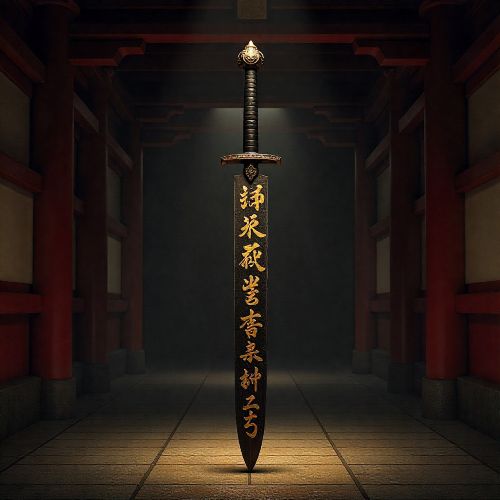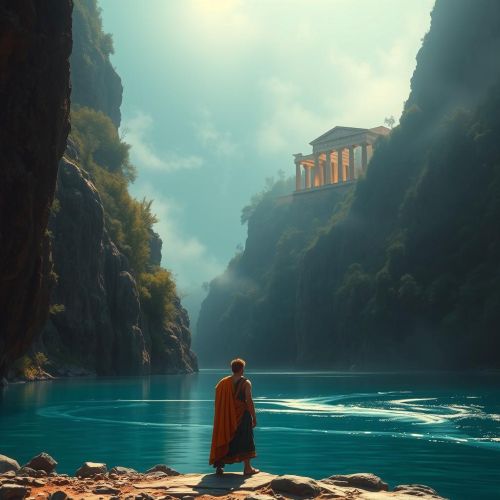Ishtar Gate : The Sacred Gateway of Ancient Babylon
At a glance
| Description | |
|---|---|
| Mythology | Mesopotamian Mythology |
| Country | Iraq |
| Closest airport | Baghdad International Airport (BGW) |
| Type | Constructed |
| Accessibility | 07/10 |
Introduction
The Ishtar Gate, built around 575 BCE under the reign of King Nebuchadnezzar II, was the eighth gate to the inner walls of Babylon, the heart of the Neo-Babylonian Empire. Located near Hillah in the Babylon Governorate of Iraq, this colossal structure once stood as the northern entrance to one of the most advanced cities of the ancient world. Unlike the museum reconstruction in Berlin, the original site still carries the weight of history—crumbling but powerful, echoing the grandeur that once defined Mesopotamian civilization. Standing before the remnants of the gate today allows travelers to step into the same sacred path that connected earthly Babylon to the divine realm of the gods.
Connection with Mythology
The Ishtar Gate was dedicated to Ishtar, the Babylonian goddess of love, war, and fertility, embodying both tenderness and ferocity. In Mesopotamian mythology, she represented balance—an agent of creation and destruction, embodying beauty, desire, and the force of life itself. The gate’s elaborate bas-reliefs of lions, bulls, and dragons (Mushussu) were not mere decorations but living symbols of divine protection. The lion, sacred to Ishtar, roared her power across the blue walls; the bull represented Adad, the storm god; and the serpent-dragon symbolized Marduk, Babylon’s chief deity. Together, they formed a divine triad that guarded the city’s entrance.
Every year during the Akitu festival, Babylon’s grand New Year celebration, processions of priests and statues of gods passed through the Ishtar Gate and along the Processional Way. This ritual procession was a vital spiritual event that renewed the covenant between the king, the gods, and the people, ensuring prosperity for the year ahead. The gate thus served as both a ceremonial threshold and a cosmic portal—where human devotion met divine presence.
Ways to Get There
Visitors to the ancient site of Babylon, near Hillah, can still witness remarkable traces of the Ishtar Gate’s original grandeur and context. Though time and history have weathered much of its form, the site remains a sacred window into one of the earliest urban civilizations.
The foundations of the Ishtar Gate are still visible, revealing the double-gate structure that once connected the outer city to the inner sanctum. The lower layers of unglazed bricks—part of the earliest construction phase—can still be seen in situ. Their immense scale offers an idea of the gate’s original height and strength.
Running through the ruins is the Processional Way, a broad ceremonial avenue that once dazzled with hundreds of glazed reliefs. Although most of the vibrant panels were removed during excavations, the pathway itself, stretching hundreds of meters toward the city’s heart, still evokes a sense of awe. Traces of lion reliefs, carved into the surviving bricks, remind visitors of the gate’s mythic guardianship and artistic brilliance.
Nearby, travelers can explore Nebuchadnezzar’s Southern Palace, where the king likely observed religious ceremonies, and the temple ruins dedicated to Marduk and other deities. The remains of the Hanging Gardens site, though debated among historians, lie within walking distance and offer a broader understanding of Babylon’s legendary reputation.
The modern replica of the Ishtar Gate, built in 1987 at the site’s entrance, provides visitors with a visual impression of how the original once appeared—its radiant blue façade, ornate borders, and mythical beasts coming to life against the desert light. While smaller and simplified, this reconstruction helps bridge the imagination between the ruins and the ancient city’s former splendor.
When standing before the surviving remnants, visitors often describe a profound sense of stillness and reverence. The soft desert wind, the sun-drenched ruins, and the silent echoes of ancient hymns combine to create an atmosphere that feels suspended in time. To walk the same path once taken by Babylonian kings, priests, and citizens is to connect directly with the heartbeat of an empire that defined civilization itself.
What to Look For
The best period to visit Babylon and the remains of the Ishtar Gate is between October and April, when the climate is mild, with daytime temperatures ranging between 20°C and 30°C. The spring months of March and April are especially pleasant and historically coincide with the ancient New Year festival that once enlivened the city. Travelers should avoid the summer months, as temperatures can soar beyond 45°C, making outdoor exploration difficult.
Visiting the Ishtar Gate in its original setting is a deeply moving experience—a chance to walk in the footsteps of kings, priests, and citizens who once honored their gods beneath its towering blue arches. The ruins may be weathered, but their spirit endures, whispering tales of divine love, human ambition, and the eternal beauty of ancient Babylon.
Importance in cultural history
The Ishtar Gate stands as one of the most enduring symbols of ancient Mesopotamian civilization, representing the pinnacle of Babylon’s architectural, spiritual, and cultural achievements. Constructed under King Nebuchadnezzar II (604–562 BCE), the gate was more than a defensive structure—it was a declaration of Babylon’s divine authority and artistic mastery. Built with glazed bricks in deep cobalt-blue hues that imitated the brilliance of lapis lazuli, the gate embodied the Babylonian belief that their city was blessed and protected by the gods. Its reliefs of lions, aurochs, and mušḫuššu dragons symbolized the deities Ishtar, Adad, and Marduk, intertwining religion and artistry into a single, monumental statement of faith.
The Ishtar Gate also functioned as a ceremonial and spiritual threshold. Standing over 15 meters above ground, with foundations plunging another 14 meters deep, it marked the entrance to the inner sanctum of Babylon—the city’s sacred core. Every brick, molded, fired, and glazed by skilled craftsmen, reflected the technical sophistication of the Neo-Babylonian Empire. When sunlight bathed its shimmering surface, the structure radiated celestial light, symbolizing the meeting of heaven and earth.
The Processional Way, stretching over 800 meters beyond the gate, served as Babylon’s spiritual artery. During the annual Akitu Festival, a 12-day New Year celebration, priests and citizens carried statues of gods like Marduk and Ishtar through the gate, accompanied by hymns, incense, and offerings. This ritual reaffirmed divine favor and cosmic order, making the Ishtar Gate the epicenter of Babylonian religious life. The interplay of art, faith, and empire embedded in its design ensured its place as a timeless masterpiece that celebrated both human creativity and divine reverence.
In modern history, the gate has played a vital role in preserving and communicating the legacy of ancient Mesopotamia. Excavated between 1904 and 1914 by Robert Koldewey, the discovery of the Ishtar Gate revealed the grandeur of Nebuchadnezzar’s Babylon to the modern world. While much of the original glazed brickwork was transported to Berlin, where it was later reconstructed, the foundations and unglazed remnants in Iraq remain an authentic testament to Babylon’s enduring heritage.
In 1987, under Saddam Hussein, a smaller replica of the gate was built near the ancient site to evoke Babylon’s past glory. Though it suffered damage during the Iraq War, efforts by the Iraqi State Board of Antiquities and Heritage and the World Monuments Fund have focused on restoration and long-term conservation. In 2019, UNESCO officially recognized Babylon as a World Heritage Site, ensuring the preservation of the original Ishtar Gate and its surrounding ruins as a global cultural treasure.
Today, the gate’s historical and artistic value extends far beyond Iraq—it represents the universal human drive to build, believe, and leave behind symbols of transcendence. The Ishtar Gate is not just a monument of the past; it is a living testament to humanity’s pursuit of beauty, power, and the divine.
Best time to travel
The best period to visit Babylon and the remains of the Ishtar Gate is between October and April, when the climate is mild, with daytime temperatures ranging between 20°C and 30°C. The spring months of March and April are especially pleasant and historically coincide with the ancient New Year festival that once enlivened the city. Travelers should avoid the summer months, as temperatures can soar beyond 45°C, making outdoor exploration difficult.
Visiting the Ishtar Gate in its original setting is a deeply moving experience—a chance to walk in the footsteps of kings, priests, and citizens who once honored their gods beneath its towering blue arches. The ruins may be weathered, but their spirit endures, whispering tales of divine love, human ambition, and the eternal beauty of ancient Babylon.
Source
Britannica Editors. (1998, July 19). Ishtar Gate | Processional Way, Babylonian Art, Neo-Babylonian Empire. Encyclopaedia Britannica. https://www.britannica.com/topic/Ishtar-Gate
Ancient Civs. (2025, January 9). The Ishtar Gate Significance in Ancient Babylonian Civilization. https://ancientcivs.blog/ishtar-gate-significance/
Wikipedia contributors. (2004, April 6). Ishtar Gate. Wikipedia. https://en.wikipedia.org/wiki/Ishtar_Gate
EBSCO Research Starters. (2018, December 31). Ishtar (deity). https://www.ebsco.com/research-starters/social-sciences-and-humanities/ishtar-deity
Evendo. (2023, December 31). Journey Through Time: The Ishtar Gate. https://evendo.com/locations/iraq/mesopotamia/landmark/ishtar-gate
Ancient Origins. The Ishtar Gate and the Deities of Babylon. https://www.ancient-origins.net/ancient-places-asia/ishtar-gate-deities-001868
Frequently Asked Questions
Where was the original Ishtar Gate located?
The original Ishtar Gate stood in the ancient city of Babylon, near modern-day Hillah in the Babylon Governorate of Iraq. It served as the eighth gate to the city’s inner walls and formed part of a grand ceremonial route known as the Processional Way.
Who built the Ishtar Gate and why?
The Ishtar Gate was built around 575 BCE by King Nebuchadnezzar II, one of the most powerful rulers of the Neo-Babylonian Empire. He dedicated it to the goddess Ishtar, the divine protector of Babylon and the deity of love, fertility, and war, as a symbol of the empire’s wealth, faith, and artistic excellence.
What was the significance of the Ishtar Gate in Babylonian culture?
The gate was both an architectural masterpiece and a religious monument. It represented the city’s connection to the gods and was the focal point of the Akitu (New Year) Festival, during which statues of Babylonian deities were paraded through it. Its imagery of lions, bulls, and dragons symbolized divine guardianship and cosmic order.
Can visitors still see the Ishtar Gate today?
Yes, visitors can see the ruins of the original Ishtar Gate at the Babylon archaeological site in Iraq, where the foundations and early brick structures remain. A smaller reconstruction built in 1987 stands near the entrance, while a larger partial reconstruction made from original bricks is housed in the Pergamon Museum in Berlin.
Why is the Ishtar Gate considered important in world history?
The Ishtar Gate is regarded as one of the greatest architectural achievements of the ancient world. It symbolizes the artistic innovation, religious devotion, and imperial power of Babylon. Its inclusion in UNESCO’s World Heritage List in 2019 ensures its preservation as a global symbol of ancient Mesopotamian civilization and a testament to humanity’s enduring cultural legacy.









